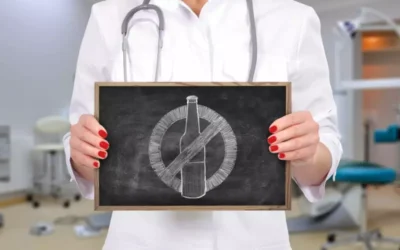What Is The Abstinence Violation Effect AVE?
Fantastic Shamrock Från Netent Har Utgått Ur Deras Sortiment
October 5, 2023Greatest Online casinos In the Malaysia
October 5, 2023If punishment was really an effective behavior deterrent then fewer of us would speed on the freeway, and find ourselves in trouble with our parents, bosses, or the legal system. Skinner argued that punishment simply induces us to avoid a behavior when we think we might get caught, and it doesn’t address the need that triggered the behavior in the first place. Many of us eat to manage our feelings and feel chronically guilty about our weight. But starting a diet with the intention of forfeiting something you like if you err is literally a recipe for disaster.
1. Nonabstinence treatment effectiveness
Most studies of relapse rely on statistical methods that assume continuous linear relationships, but these methods may be inadequate for studying a behavior characterized by discontinuity and abrupt changes [33]. Consistent with the tenets of the reformulated RP model, several studies suggest advantages of nonlinear statistical approaches for studying relapse. The RP model developed by Marlatt [7,16] provides https://ecosoberhouse.com/ both a conceptual framework for understanding relapse and a set of treatment strategies designed to limit relapse likelihood and severity. Because detailed accounts of the model’s historical background and theoretical underpinnings have been published elsewhere (e.g., [16,22,23]), we limit the current discussion to a concise review of the model’s history, core concepts and clinical applications.
Relapse Prevention And Ongoing Treatment At Bedrock
This can create a cycle of self-recrimination and further substance use, making it challenging to maintain long-term abstinence. One of the key features of the AVE is its potential to trigger a downward spiral of further relapse and continued substance use. For example, I am a failure (labeling) and will never be successful with abstaining from drinking, eating healthier, or exercising (jumping to conclusions). AVE also involves cognitive dissonance, a distressing experience people go through when their internal thoughts, beliefs, actions, or identities are put in conflict with one another.
Definitions of relapse and relapse prevention
How can we work on recovery when times get tough? Inspiration from Kobe Bryant. – Psychology Today
How can we work on recovery when times get tough? Inspiration from Kobe Bryant..
Posted: Thu, 08 Sep 2022 07:00:00 GMT [source]
Craving is an overwhelming desire to seek a substance, and cravings focus all one’s attention on that goal, shoving aside all reasoning ability. Perhaps the most important thing to know about cravings is that they do not last forever. It is also necessary to know that they are not a sign of failure; they are inevitable. abstinence violation effect But their lifespan can be measured in minutes—10 or 15—and that enables people to summon ways to resist them or ride them out. Following the initial introduction of the RP model in the 1980s, its widespread application largely outpaced efforts to systematically validate the model and test its underlying assumptions.
Research identifying relapse patterns in adolescents recovering from addiction shows they are especially vulnerable in social settings when they trying to enhance a positive emotional state. Also critical is building a support network that understands the importance of responsiveness. Not least is developing adaptive ways for dealing with negative feelings and uncertainty.
This model notes that those who have the latter mindset are proactive and strive to learn from their mistakes. To do so, they adapt their coping strategies to better deal with future triggers should they arise. This protects their sobriety and enhances their ability to protect themselves from future threats of relapse.

If you or a loved one are worried about relapsing into alcohol or drug abuse, contact Northeast Addictions Treatment Center today. We provide comprehensive treatment for drug and alcohol use disorders, including relapse prevention programs, management of your cravings, and other evidence-based options. Only a small minority of people with substance use disorders (SUDs) receive treatment. A focus on abstinence is pervasive in SUD treatment, defining success in both research and practice, and punitive measures are often imposed on those who do not abstain. Most adults with SUD do not seek treatment because they do not wish to stop using substances, though many also recognize a need for help.
- It can impact someone who is trying to be abstinent from alcohol and drug use in addition to someone trying to make positive changes to their diet, exercise, and other aspects of their lives.
- Although the majority of perceived predictors were mentioned by both stakeholder groups, they had different opinions regarding their importance.
- In the absence of an emergency plan for just such situations, or a new life with routines to jump into, or a strong social network to call upon, or enhanced coping skills, use looms as attractive.
- Rather than being viewed as a state or endpoint signaling treatment failure, relapse is considered a fluctuating process that begins prior to and extends beyond the return to the target behavior [8,24].
- Cravings can be dealt with in a great variety of ways, and each person needs as array of coping strategies to discover which ones work best and under what circumstances.
Future Directions
Taylor uses an app to watch her intake of calorie limit and does see positive outcomes to her new lifestyle. One night, she craves pizza and wings, orders out, and goes over her calories for the day. Lapses are, however, a major risk factor for relapse as well as overdose and other potential social, personal, and legal consequences of drug or alcohol abuse.
Future research

Still, some have criticized the model for not emphasizing interpersonal factors as proximal or phasic influences [122,123]. Other critiques include that nonlinear dynamic systems approaches are not readily applicable to clinical interventions [124], and that the theory and statistical methods underlying these approaches are esoteric for many researchers and clinicians [14]. Rather than signaling weaknesses of the model, these issues could simply reflect methodological challenges that researchers must overcome in order to better understand dynamic aspects of behavior [45].


